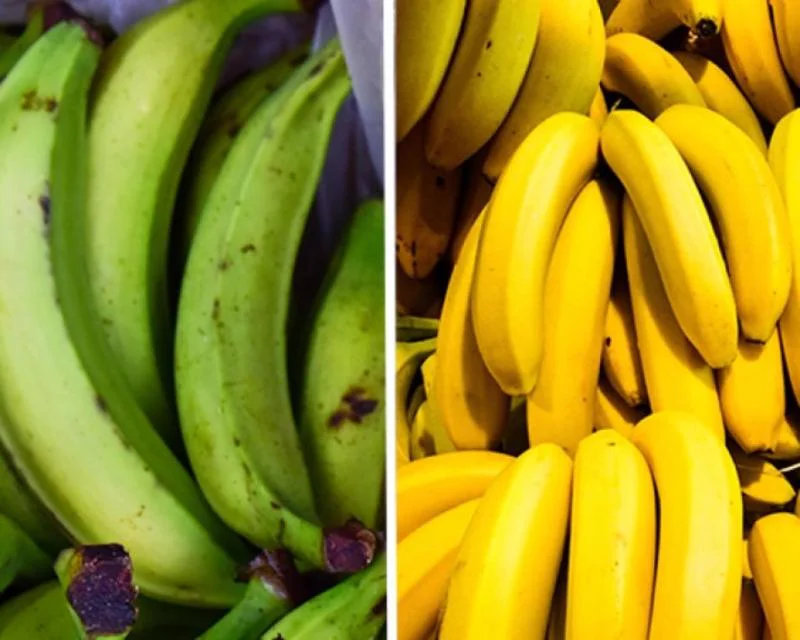Bananas can be found in numerous family fruit baskets. Plantain and bananas look so much alike and can be confusing most times. Substituting a plantain for a banana in a meal will offer a very different taste. This article will help expose more of the differences and similarities between plantain and bananas in flavour and usage.
What is Banana?
Banana is of various kinds. A Banana is an edible fruit produced from a different sizeable herbaceous plant in the genus musa. Initially, bananas are from the Malay Archipelago of Southeast Asia. When the banana is unripe, the outer skin looks green and hard, making it difficult to peel when unripe. Gradually the banana becomes ripe; during this period, the skin changes colour to bright yellow, then to dark brown making it easy to peel. Bananas, when ripe, can be consumed raw. The flesh becomes very sweet and soft too. Another way to enjoy banana is when cooked ripe; it is often added to desserts. When the banana is cooked unripped, it is mashed before eating, just like the mashed potatoes are prepared.
What is Plantain?
Genetically, plantains and bananas are similar. Plantains can only be eaten when cooked and not raw. Plantains initially are also from southeast Asia. However, they are planted worldwide, even in Egypt, India, and America’s tropical regions. In size, plantains are larger and also harder than bananas, with a much thicker skin. Plantains can be green. When ripe, it turns yellow and then dark brown.
Difference Between Plantain and Banana
Plantains contain more starch than bananas. They are not so sweet when unripe, but when it’s ripe, they tend to be sweeter than bananas, even when cooked. There are several ways to prepare plantain: cooked, baked, or fried. Outside their botanical classes, another significant similarity between plantains and bananas is the way they look. They also share some similar nutritional and health-promoting attributes. Plantains and bananas are good sources of essential nutrients such as potassium, fibre, vitamin c, and some antioxidant compounds. Plantains have about 32 grams of carbohydrates in every serving of 100 grams, while bananas have about 23 grams in one serving. This quantity varies depending on how ripe the fruits are.
Plantain and bananas provide the same health gains. Most of the carbohydrates from banana is obtained from sugar, while the carbohydrates from plantains are obtained from starch. Neither fruits possess any source of fat or protein. Research proved that there is a bioactive compound in plantains and bananas with antioxidants and anti-inflammatory effects. Plantain contains a high potassium level which helps reduce blood pressure and ease the rate of heart disease. The fibre content in plantain and banana handles a significant role in promoting digestive well-being.
Another significant difference between plantains and bananas is how people use them in the kitchen. Since bananas are sweet, they are often used in the preparation of desserts and baked foods like muffins, pies, and bread. Also, they can be taken raw or like fruit salad and porridge toppings. When boiled, bananas can only be enjoyed with them being very soft as they will be mashed. Plantains can be mostly used in preparing local dishes such as cuisines from Ghana and Nigeria. Plantains are usually starchy, green, and hard when unripe but become soft when ripe. Plantains can be fried and also served alongside other meals. Plantains contain lesser sugar and can be served as a main dish. Their skins are thicker than banana skin. The darker the plantain is, the sweeter they taste. Plantains can be eaten at any ripening stage, though you will need a knife to prepare them.







